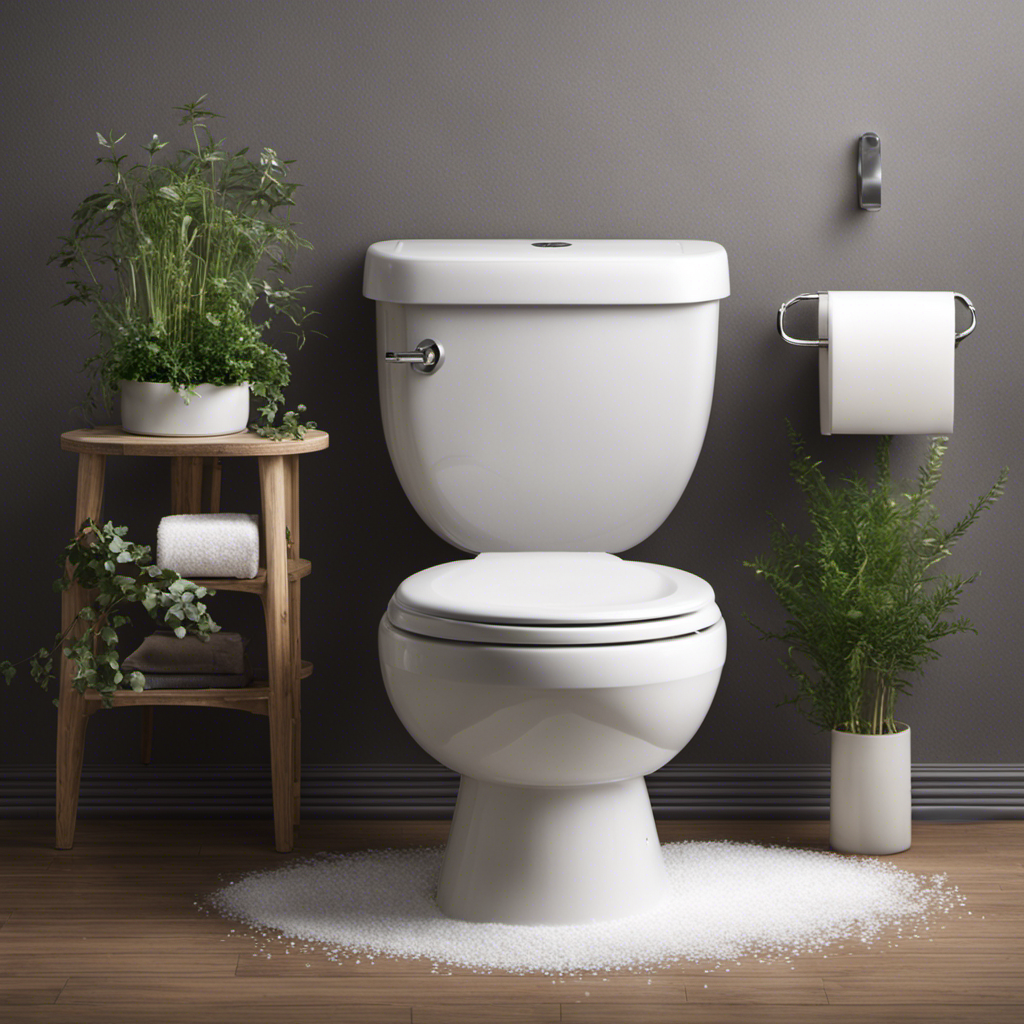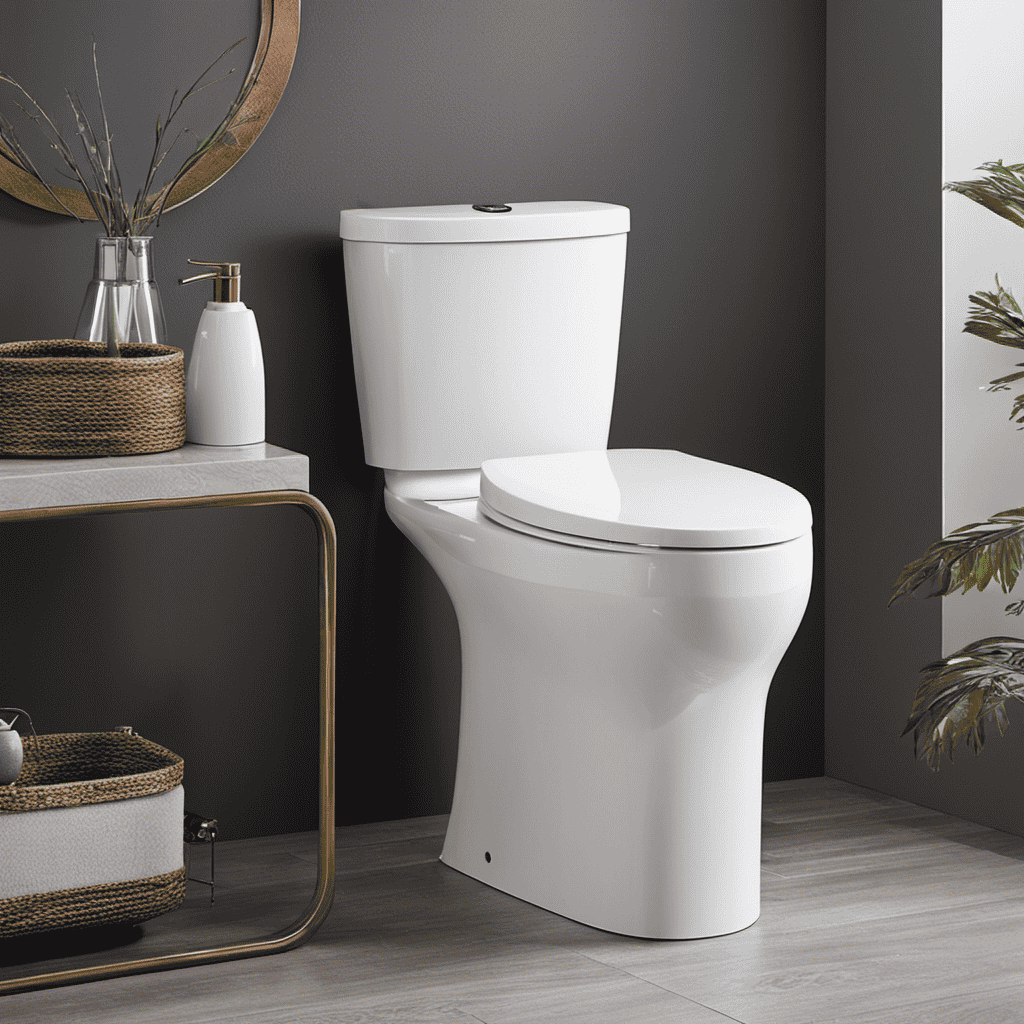I’ve got the ultimate guide to help you master your eco-journey with composting toilets!
In this article, we’ll explore the essential techniques for optimizing your composting system.
From regular inspections to assessing compost quality, monitoring moisture and heat levels, ensuring proper ventilation, and checking seals and joints, we’ll cover it all.
Get ready to make a positive impact on the environment and serve others with this evidence-based and informative guide.
Let’s dive in!
Key Takeaways
- Regular inspections and maintenance are crucial for optimal functioning of composting toilets.
- Assessing compost quality is important for creating nutrient-rich soil.
- Monitoring moisture levels helps prevent anaerobic conditions and unpleasant odors.
- Fine-tuning heat levels promotes the growth of beneficial bacteria and reduces pathogens.
Regular Inspection Techniques
I usually inspect my composting toilet regularly to ensure everything is working properly. Regular inspection is crucial for the efficient functioning of the system and to troubleshoot any potential problems.
When inspecting the components, it’s important to check the ventilation system, ensuring that it’s clear of any blockages or obstructions. The waste container should be inspected for any signs of leakage or overflow, and the compost pile should be monitored for proper decomposition.
Additionally, it’s essential to inspect the toilet seat and lid for any damage or wear and tear. By regularly inspecting these components, you can identify and address any issues promptly, allowing your composting toilet to work optimally and contribute to a sustainable and eco-friendly lifestyle.
Assessing Compost Quality
The key to assessing compost quality is to carefully examine the ratio of organic matter to non-organic matter, ensuring a healthy balance for optimal nutrient-rich soil. Compost decomposition plays a crucial role in determining the nutrient content of the final product. The table below provides a comprehensive overview of the ideal nutrient composition in compost:
| Nutrient | Ideal Range |
|---|---|
| Nitrogen (N) | 1.5-2.5% |
| Phosphorus (P) | 0.5-1.0% |
| Potassium (K) | 1.0-2.0% |
| Calcium (Ca) | 1.0-2.0% |
| Magnesium (Mg) | 0.3-0.5% |
Monitoring Moisture Levels
Monitoring the moisture levels in compost is crucial for maintaining optimal conditions for decomposition and nutrient-rich soil. Proper moisture levels ensure that microorganisms can break down the organic matter effectively, resulting in high-quality compost. Here are a few reasons why monitoring moisture is essential:
-
Preventing anaerobic conditions: Excess moisture can create anaerobic conditions in the compost, leading to unpleasant odors and slow decomposition. Regularly checking moisture levels helps prevent this issue.
-
Composting toilet troubleshooting: Monitoring moisture levels can help troubleshoot common problems with composting toilets, such as excess moisture causing a lack of decomposition or a foul smell.
-
Composting toilet odor control: By maintaining the right moisture levels, you can minimize odors associated with composting toilets, creating a more pleasant experience for users and neighbors.
-
Maximizing nutrient content: Moisture control ensures that the composting process is efficient, leading to nutrient-rich soil that can benefit gardens and landscapes.
Fine-tuning Heat Levels
To optimize the composting process, it’s important to closely monitor and adjust the heat levels for maximum efficiency. Heat distribution and temperature control play a crucial role in breaking down organic matter and reducing pathogens in composting toilets. Maintaining the right temperature range promotes the growth of beneficial bacteria while inhibiting the growth of harmful pathogens.
A well-designed composting toilet system should have a heat distribution system that evenly distributes heat throughout the composting chamber. This ensures that all waste is exposed to the necessary temperature for efficient decomposition. Monitoring the temperature is essential to make adjustments if the heat levels fall outside the optimal range.
Here is a table that illustrates the recommended temperature ranges for different stages of the composting process:
| Stage | Temperature Range |
|---|---|
| Start-up phase | 25°C – 30°C |
| Active composting | 40°C – 60°C |
| Maturation phase | 25°C – 35°C |
| Curing phase | 20°C – 25°C |
| Final product | Ambient |
Ensuring Proper Ventilation
How can I ensure proper ventilation and maintain a healthy environment in my composting toilet system?
Ventilation maintenance is crucial for an efficient and odor-free composting toilet system. Here are some troubleshooting tips to help you maintain proper ventilation:
-
Check the vent pipe: Ensure that the vent pipe is clear of any obstructions, such as debris or bird nests. A blocked vent pipe can restrict airflow and lead to unpleasant odors.
-
Regularly clean the vent fan: Dust and dirt can accumulate on the vent fan blades, reducing its efficiency. Clean the fan regularly to ensure proper airflow.
-
Use a vent stack filter: Installing a vent stack filter can help eliminate odors and prevent insects from entering the system.
-
Monitor moisture levels: Excessive moisture can lead to anaerobic conditions, resulting in foul odors. Regularly check and adjust the moisture levels in your composting toilet system.
Checking Seals and Joints
When it comes to composting toilets, checking seals and joints is crucial for preventing leakage and odors.
Ensuring airtight connections between components is essential to maintain the efficiency of the system.
Regular maintenance and inspection of seals and joints can significantly contribute to the longevity of the composting toilet and enhance its overall performance.
Preventing Leakage and Odor
I can smell a strong odor coming from the bathroom, indicating that there might be a leak in the toilet’s seals or joints. This issue needs immediate attention to prevent further damage and ensure a hygienic environment.
Here are some steps you can take to prevent leakage and control bacteria:
- Regularly inspect the seals and joints for any signs of wear or damage.
- Use a high-quality toilet sealant to create a watertight barrier.
- Avoid flushing excessive amounts of toilet paper or other materials that can clog the pipes and cause overflow.
- Clean and disinfect the toilet regularly to control bacteria growth and eliminate odors.
By following these preventive measures, you can maintain a leak-free toilet and create a healthier and more comfortable bathroom experience.
Ensuring Airtight Connections
To ensure airtight connections, I regularly inspect the seals and joints for any signs of wear or damage. This is crucial for maintaining the insulation effectiveness and odor control of my composting toilet system. By conducting routine inspections, I can identify any potential issues and address them promptly, preventing any leakage or unpleasant odors.
In my inspections, I pay close attention to the seals and joints, ensuring they are intact and properly sealed. I also check for any cracks or gaps that may compromise the insulation effectiveness of the system. By maintaining a tight seal, I can prevent any heat loss and optimize the composting process.
To help visualize the importance of airtight connections in a composting toilet system, I have created the following table:
| Problem | Solution |
|---|---|
| Damaged seal | Replace seal |
| Loose joint | Tighten joint |
| Cracked pipe | Repair or replace |
By addressing these issues promptly, I ensure that my composting toilet system remains efficient and effective in managing waste.
Now, let’s move on to some maintenance tips for ensuring the longevity of your composting toilet system.
Maintenance Tips for Longevity
Regularly checking the seals and joints is essential for ensuring the longevity of my composting toilet system, so I can prevent any potential issues. As someone who values sustainable living, maintaining my composting toilet is crucial to maximize its benefits.
Here are some maintenance tips to help you optimize your composting toilet installation:
-
Inspect seals and joints: Regularly check for any signs of wear or damage on the seals and joints. Replace them if necessary to prevent leaks and odors.
-
Clean the system: Regularly clean the composting chamber and urine diverter to maintain proper functioning and prevent buildup of waste materials.
-
Monitor moisture levels: Maintaining the right moisture balance is key to effective composting. Keep an eye on the moisture levels and adjust as needed by adding bulking materials or adjusting ventilation.
-
Empty the compost: Once the compost is fully decomposed, remove it from the chamber and use it as nutrient-rich soil for your garden.
Frequently Asked Questions
What Are Some Common Maintenance Issues That Can Arise With Composting Toilets?
Maintenance issues can arise with composting toilets, but there are troubleshooting tips that can help. Some common problems include odor, excess moisture, and compost not breaking down properly.
To address odor, proper ventilation and adding carbon-rich materials can help.
Excess moisture can be managed by adding more absorbent materials and ensuring proper airflow.
If the compost isn’t breaking down, adjusting the carbon-to-nitrogen ratio and maintaining the right temperature can help.
Regular maintenance and following guidelines can prevent these issues.
How Often Should I Inspect My Composting Toilet to Ensure It Is Functioning Properly?
I inspect my composting toilet regularly to ensure it’s functioning properly. It’s important to maintain its efficiency and avoid any potential issues.
I recommend inspecting it at least once a month, checking for any leaks, odors, or blockages. Additionally, it’s good to troubleshoot common problems such as excessive moisture or improper waste decomposition.
What Are Some Signs of Poor Compost Quality and How Can I Address Them?
When it comes to composting toilet troubleshooting and improving composting toilet efficiency, it’s important to be aware of signs of poor compost quality. Some indicators include foul odors, slow decomposition, and visible pests.
To address these issues, make sure you’re properly balancing the carbon and nitrogen ratio, maintaining proper moisture levels, and regularly turning the compost pile. Additionally, consider adding bulking agents and adjusting the temperature if necessary.
Are There Any Specific Tools or Equipment I Need to Monitor Moisture Levels in My Composting Toilet?
To monitor moisture levels in composting toilets, specific equipment called monitoring tools can be used. These tools help in ensuring the right balance of moisture for effective composting.
By regularly checking the moisture levels, you can make adjustments to maintain optimal conditions and avoid any issues with the compost quality.
It’s important to have these tools on hand to ensure the success of your composting journey and to maximize the benefits of composting toilets.
How Can I Adjust the Heat Levels in My Composting Toilet to Optimize Its Performance?
To optimize the performance of a composting toilet, adjusting heat levels is crucial. By regulating the temperature, you can ensure efficient decomposition and minimize odor.
One way to do this is by adjusting the ventilation system to control airflow and heat transfer. Additionally, monitoring the moisture levels and adding bulking agents can help maintain the ideal conditions for composting.
Troubleshooting odor control is also essential, and it can be achieved by maintaining proper ventilation and regularly emptying the compost bin.
Conclusion
In conclusion, mastering the art of composting toilets requires:
- Regular inspections
- Assessing compost quality
- Monitoring moisture levels
- Fine-tuning heat levels
- Ensuring proper ventilation
- Checking seals and joints
As the saying goes, ‘A stitch in time saves nine,’ it’s essential to address any issues promptly to maintain an optimized eco-journey.
By following these steps and staying informed, you can effectively contribute to a more sustainable and eco-friendly lifestyle.










